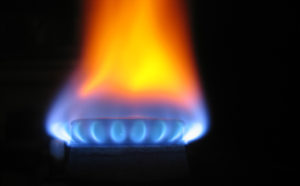 Natural gas futures fell more than 1% on Tuesday after the Energy Information Administration reported that U.S. natural gas stockpiles rose above the average in the week ended October 11, indicating softening demand for the power-station fuel.
Natural gas futures fell more than 1% on Tuesday after the Energy Information Administration reported that U.S. natural gas stockpiles rose above the average in the week ended October 11, indicating softening demand for the power-station fuel.
On the New York Mercantile Exchange, natural gas futures for settlement in November traded at $3.642 per million British thermal units at 14:56 GMT, down 0.72% on the day. Prices held in range between days low of $3.611, the weakest level since October 7, while days high stood at $3.669 per mBtu. The power-plant fuel fell by nearly 3% and extended its weekly decline on Tuesday.
Natural gas continued to edge lower after the Energy Information Administration released its delayed storage report which was slated for October 17. The government agency reported that U.S. inventories rose by 77 billion cubic feet in the week ended October 11, matching the median estimate of analysts surveyed by Bloomberg. The build however exceeded the five-year average increase of 75 billion cubic feet and last years 54 billion gain during the comparable week.
Total gas held in underground U.S. storage hubs now equaled 3.654 trillion cubic feet, 3.1% lower than last years 3.769 trillion cubic feet. The surplus over the five-year average total amount remained unchanged at 1.6%.
Market players kept a close watch on U.S. weather forecasts to gauge the power-station fuels demand prospects. Matt Rogers, president of Commodity Weather Group LLC, said for Bloomberg on Monday that readings from the Great Plains to the East Coast will be 3 to 5 degrees Fahrenheit below average through November 4 and temperatures in the Midwest are likely to fall at least 5 degrees below usual this week.
When cool weather is expected, natural gas surges as increased electricity demand to power air-conditioning calls for more supply of the fuel, which is used for a quarter of the U.S. electricity generation. Consumption usually picks up from November through March. According to the Energy Information Administration, power generation accounts for 32% of U.S. gas demand and 49% of U.S. households use the energy source for heating.
However, extended forecasting models pointed at above-normal temperatures across most of the U.S. through November, curbing the fuels demand prospects.





